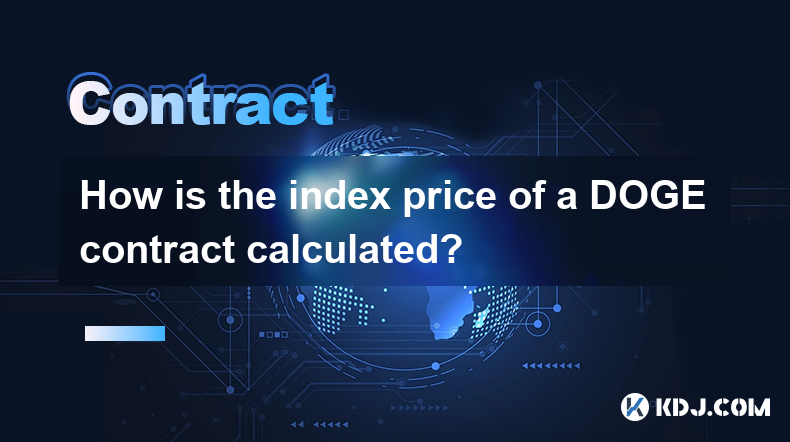-
 Bitcoin
Bitcoin $84,380.9629
-0.68% -
 Ethereum
Ethereum $1,587.8040
0.39% -
 Tether USDt
Tether USDt $0.9997
0.02% -
 XRP
XRP $2.0611
-0.10% -
 BNB
BNB $592.1695
0.41% -
 Solana
Solana $134.0171
-0.42% -
 USDC
USDC $1.0000
0.00% -
 Dogecoin
Dogecoin $0.1576
1.44% -
 TRON
TRON $0.2401
-3.06% -
 Cardano
Cardano $0.6295
2.16% -
 UNUS SED LEO
UNUS SED LEO $9.2244
1.69% -
 Chainlink
Chainlink $12.5592
0.40% -
 Avalanche
Avalanche $19.0618
0.03% -
 Toncoin
Toncoin $2.9920
1.85% -
 Stellar
Stellar $0.2398
0.17% -
 Shiba Inu
Shiba Inu $0.0...01228
4.28% -
 Hedera
Hedera $0.1653
1.46% -
 Sui
Sui $2.1201
-0.04% -
 Bitcoin Cash
Bitcoin Cash $335.2957
0.47% -
 Polkadot
Polkadot $3.6693
0.93% -
 Litecoin
Litecoin $75.9657
1.55% -
 Hyperliquid
Hyperliquid $17.0326
-0.70% -
 Dai
Dai $1.0000
0.01% -
 Bitget Token
Bitget Token $4.4071
0.71% -
 Ethena USDe
Ethena USDe $0.9992
0.02% -
 Pi
Pi $0.6423
4.69% -
 Monero
Monero $215.4419
-0.65% -
 Uniswap
Uniswap $5.1801
0.13% -
 Pepe
Pepe $0.0...07322
1.11% -
 OKB
OKB $50.2807
-0.70%
How is the index price of a DOGE contract calculated?
DOGE perpetual contract index prices are weighted averages from multiple exchanges, prioritizing high-volume, liquid markets to minimize manipulation and offer a fair market reflection, though slight discrepancies and delays can occur.
Mar 24, 2025 at 05:07 pm

Key Points:
- DOGE perpetual contracts' index price is typically calculated using a weighted average from multiple reputable cryptocurrency exchanges.
- The weighting assigned to each exchange reflects its trading volume and liquidity. This aims to provide a robust and representative price.
- Data feeds from these exchanges are crucial; delays or inaccuracies in these feeds can affect the index price's accuracy.
- Discrepancies can arise from different exchange prices and the time lag in data aggregation.
- The exact methodology varies slightly depending on the specific exchange offering the DOGE contract.
How is the index price of a DOGE contract calculated?
The index price of a DOGE perpetual contract isn't derived from a single source but rather a composite of several exchanges' prices. This is crucial to mitigate manipulation attempts on any one exchange. Think of it as a more robust average, offering a fairer reflection of the market's overall sentiment towards DOGE.
The calculation usually involves a weighted average. Exchanges with higher trading volume and greater liquidity generally receive a higher weighting in the calculation. This prioritizes data from exchanges where DOGE trading is most active and reliable, minimizing the influence of less liquid markets.
The process starts with selecting reliable exchanges known for their large trading volume and robust security measures. These exchanges provide real-time price data feeds, which are constantly monitored for accuracy and consistency.
Data feeds are the lifeblood of this calculation. If a data feed experiences a temporary outage or transmits inaccurate information, it can significantly impact the index price. To mitigate this, exchanges often implement backup data feeds and rigorous quality control measures.
The weighting process itself is not static. It's often adjusted based on ongoing market analysis. If a particular exchange experiences a significant increase or decrease in trading volume or liquidity, its weighting in the index calculation will be reassessed to reflect the change. This ensures the index price remains as accurate as possible.
Timing is crucial in this process. The time it takes to gather price data from different exchanges and perform the weighted average calculation can introduce a slight delay between the actual market price and the reported index price. This lag is usually minimal but can become noticeable during periods of high volatility.
Discrepancies between the index price and the spot price on individual exchanges are possible. These discrepancies are primarily due to the time lag in data aggregation and the inherent differences in prices across different exchanges. They typically remain small but can increase during times of significant market swings.
Each exchange offering DOGE perpetual contracts might have slightly different methodologies for calculating the index price. They might select different exchanges for inclusion, use varying weighting schemes, or employ different data aggregation techniques. It's essential to consult the specific exchange's documentation to understand its precise method.
How often is the DOGE contract index price updated?
The index price is usually updated very frequently, often several times per second, to keep pace with the fast-moving cryptocurrency market. This ensures the price reflects the current market conditions as accurately as possible.
What happens if one of the data sources fails?
Most platforms have backup data sources and sophisticated algorithms to handle temporary outages. If a primary data source fails, the system automatically switches to a backup to maintain continuous index price updates. However, prolonged or widespread failures can impact the accuracy and reliability of the index price.
How is the weighting determined for each exchange?
The weighting is typically based on a combination of factors, most importantly trading volume and liquidity. Exchanges with higher 24-hour trading volume and deeper order books generally receive a higher weighting, reflecting their greater influence on the market price. The exact formula for determining the weights often remains proprietary to the exchange.
Can the index price be manipulated?
While the use of multiple exchanges and weighted averages aims to minimize the risk of manipulation, it's not entirely impossible. A coordinated effort to artificially inflate or deflate the price on several exchanges could potentially influence the index price. However, such manipulation is challenging due to the complexity and the need to control numerous exchanges simultaneously.
What are the implications of an inaccurate index price?
An inaccurate index price can lead to incorrect liquidation prices for leveraged traders, potentially resulting in unnecessary losses. It can also distort the market's perception of DOGE's value, impacting trading decisions. The reliability of the index price is paramount for the fair and efficient functioning of the DOGE perpetual contract market.
Disclaimer:info@kdj.com
The information provided is not trading advice. kdj.com does not assume any responsibility for any investments made based on the information provided in this article. Cryptocurrencies are highly volatile and it is highly recommended that you invest with caution after thorough research!
If you believe that the content used on this website infringes your copyright, please contact us immediately (info@kdj.com) and we will delete it promptly.
- BNB Buying Demand Rises as Market Sentiment Turns Positive
- 2025-04-19 08:20:16
- FUR PFP Campaign
- 2025-04-19 08:20:16
- The legal fight against crypto exchanges flares up again
- 2025-04-19 08:15:13
- Presidential Crypto Advisory Committee Head Bo Hines Highlights Ways the United States Could Improve Its Bitcoin (BTC) Reserves
- 2025-04-19 08:15:13
- Prominent Bitcoin Pundit Davinci Jeremic Has Shared a Bullish Outlook for XRP Despite His Long-Standing Reservations About the Ripple-Linked Coin
- 2025-04-19 08:10:15
- Broncos Give 2025 Reaches Nearly 1200 Donors
- 2025-04-19 08:10:15
Related knowledge

How does Tail Protection reduce the loss of liquidation?
Apr 11,2025 at 01:50am
Introduction to Tail Protection in CryptocurrencyTail Protection is a mechanism designed to mitigate the risks associated with liquidation in cryptocurrency trading. Liquidation occurs when a trader's position is forcibly closed by the exchange due to insufficient margin to cover potential losses. This often happens in leveraged trading, where traders b...

What are the consequences of an imbalance in the long-short ratio?
Apr 13,2025 at 02:50pm
The long-short ratio is a critical metric in the cryptocurrency trading world, reflecting the balance between bullish and bearish sentiments among traders. An imbalance in this ratio can have significant consequences on the market dynamics, affecting everything from price volatility to trading strategies. Understanding these consequences is essential fo...

How to judge the market trend by the position volume?
Apr 11,2025 at 02:29pm
Understanding how to judge the market trend by position volume is crucial for any cryptocurrency trader. Position volume, which refers to the total number of open positions in a particular cryptocurrency, can provide valuable insights into market sentiment and potential price movements. By analyzing this data, traders can make more informed decisions ab...

Why does a perpetual contract have no expiration date?
Apr 09,2025 at 08:43pm
Perpetual contracts, also known as perpetual futures or perpetual swaps, are a type of derivative product that has gained significant popularity in the cryptocurrency market. Unlike traditional futures contracts, which have a fixed expiration date, perpetual contracts do not expire. This unique feature raises the question: why does a perpetual contract ...

Why is the full-position mode riskier than the position-by-position mode?
Apr 13,2025 at 03:42pm
Why is the Full-Position Mode Riskier Than the Position-by-Position Mode? In the world of cryptocurrency trading, the choice between full-position mode and position-by-position mode can significantly impact the risk profile of a trader's portfolio. Understanding the differences between these two modes is crucial for making informed trading decisions. Th...

How is the liquidation price calculated?
Apr 12,2025 at 01:35am
Introduction to Liquidation PriceLiquidation price is a critical concept in the world of cryptocurrency trading, particularly when dealing with leveraged positions. Understanding how this price is calculated is essential for traders to manage their risk effectively. The liquidation price is the point at which a trader's position is forcibly closed by th...

How does Tail Protection reduce the loss of liquidation?
Apr 11,2025 at 01:50am
Introduction to Tail Protection in CryptocurrencyTail Protection is a mechanism designed to mitigate the risks associated with liquidation in cryptocurrency trading. Liquidation occurs when a trader's position is forcibly closed by the exchange due to insufficient margin to cover potential losses. This often happens in leveraged trading, where traders b...

What are the consequences of an imbalance in the long-short ratio?
Apr 13,2025 at 02:50pm
The long-short ratio is a critical metric in the cryptocurrency trading world, reflecting the balance between bullish and bearish sentiments among traders. An imbalance in this ratio can have significant consequences on the market dynamics, affecting everything from price volatility to trading strategies. Understanding these consequences is essential fo...

How to judge the market trend by the position volume?
Apr 11,2025 at 02:29pm
Understanding how to judge the market trend by position volume is crucial for any cryptocurrency trader. Position volume, which refers to the total number of open positions in a particular cryptocurrency, can provide valuable insights into market sentiment and potential price movements. By analyzing this data, traders can make more informed decisions ab...

Why does a perpetual contract have no expiration date?
Apr 09,2025 at 08:43pm
Perpetual contracts, also known as perpetual futures or perpetual swaps, are a type of derivative product that has gained significant popularity in the cryptocurrency market. Unlike traditional futures contracts, which have a fixed expiration date, perpetual contracts do not expire. This unique feature raises the question: why does a perpetual contract ...

Why is the full-position mode riskier than the position-by-position mode?
Apr 13,2025 at 03:42pm
Why is the Full-Position Mode Riskier Than the Position-by-Position Mode? In the world of cryptocurrency trading, the choice between full-position mode and position-by-position mode can significantly impact the risk profile of a trader's portfolio. Understanding the differences between these two modes is crucial for making informed trading decisions. Th...

How is the liquidation price calculated?
Apr 12,2025 at 01:35am
Introduction to Liquidation PriceLiquidation price is a critical concept in the world of cryptocurrency trading, particularly when dealing with leveraged positions. Understanding how this price is calculated is essential for traders to manage their risk effectively. The liquidation price is the point at which a trader's position is forcibly closed by th...
See all articles
























































































